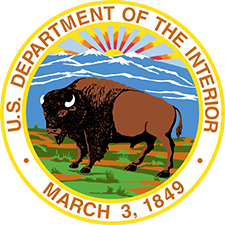A hazardous fuel is any kind of living or dead vegetation that is flammable. To meet desirable management goals, managers can modify the structure, distribution and vegetation type on a landscape.
The Fuels Management Program works with the Bureau of Indian Affairs’ (BIA) regional offices and local agencies to provide funding that reduces hazardous fuels. Prescribed fire, mechanical treatments and the careful use of natural fire are tools to help land managers meet the goals, objectives and desired conditions for the BIA agency or Tribe’s Hazardous Fuels Reduction (HFR) Management Program.
Wildland Urban Interface
The wildland urban interface (WUI) is the area where wildland fuels begin to interface with urbanized areas. Managing fuels within the WUI is prioritized because reducing these hazardous fuels increases public and firefighter safety, reduces the risk of unwanted wildfire to communities and helps protect important infrastructure such as radio towers, transportation networks, municipal watersheds and utilities.
While treating hazardous fuels within the WUI is a priority, a larger number of hazardous fuels projects take place outside the WUI. Restoring and maintaining healthy fire-adapted ecosystems keeps natural systems balanced and reduces the risks to cultural and historic places.
Prescribed Fire Treatments
Prescribed fire is a tool used by natural resource managers to carefully apply fire under rigorous standards to restore natural landscapes and achieve resource management objectives.
Prescribed fire treatments must meet BIA Prescribed Fire policy and comply with the National Environmental Policy Act (NEPA) and other environmental compliance requirements. Each treatment requires specific burn plans with measurable burn objectives that clearly define operational procedures for implementation, monitoring, and identifying contingency resources to use in case of unanticipated outcomes such as an escaped prescribed fire scenario.
Prescribed burning is a tool managers may use as a singular event, or in combination with other mechanical treatments to reduce vegetation buildup. In fire-adapted systems, fire should be present on a recurring cycle that is consistent with the natural fire regime to sustain ecosystem functionality and resilience to disturbances.
Mechanical Treatments
Mechanical treatments are often used in areas where fire has been excluded for long periods of time, around communities where prescribed fire or smoke management may have negative consequences or in areas that invasive species have rendered unsuitable for other types of treatments. Mechanical treatments may include thinning, regeneration cuts, pruning, mastication, and chipping in addition to other fuel manipulations. Biomass from mechanical treatments varies widely depending upon site vegetation and treatment objectives.
Additional Information
Related Pages
Contact Us
Boise, ID 83705


